Mexican folk art is an art form that originated in Mexico. Its aesthetics are inspired by Mexican culture, and it often expresses the Mexican people’s ethnic identity.
Many artists have contributed to this art movement. Among them are potters of Yucatán, silversmiths of Oaxaca, and papermakers of Oaxaca. Besides its aesthetic value, folk art has a deep cultural significance for Mexicans.
Unlike other art forms, folk art serves to preserve Mexican culture and history by bringing together artisans from different regions to create new pieces that tell stories about their people and society. That’s why understanding the characteristics of Mexican folk art is crucial for you to appreciate its beauty and significance better.
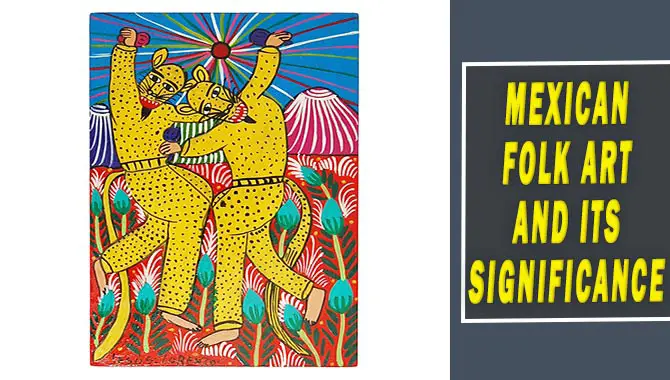
What Is Mexican Folk Art Style?
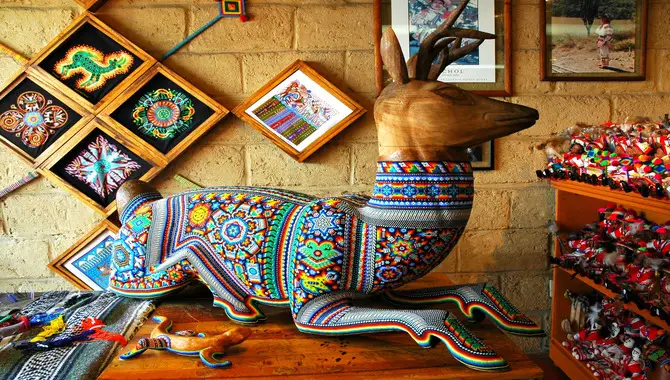
Mexican folk art is a unique style characterized by vibrant colors, intricate designs, and playful elements. Mexican folk art has been popular worldwide for centuries and is still widely used today. The folk art of Mexico captures the beauty and diversity of its diverse culture.
Mexican folk art can use in decorations and souvenirs, such as pottery or textiles. There are many different types of Mexican folk art, each with its unique story and meaning. Mexican folk art is an integral part of Mexican culture, whether it’s religious geometric shapes or bright colors of Mexico’s north.
13 Mexican Folk Art And Its Significance
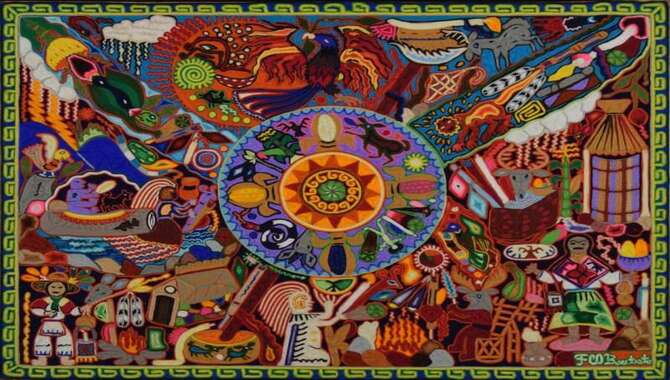
Mexican folk art is a form of art that has been passed down from generation to generation within the culture of Mexico. It can broadly categorize into two types: traditional and contemporary. Traditional Mexican folk art is an art that has been practiced for many years and has its roots in Mexico’s ancient cultures, such as painting, pottery, weaving, costumes, and music.
1. Huichol Art
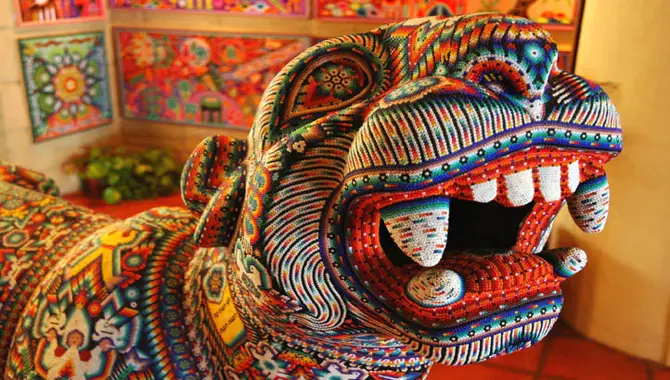
Huichol art is one of Mexican folk art’s most distinctive and recognizable forms. Their artwork can see in museums around the world, often featuring representations of gods and animals. Over 1,500 Huichol paintings exist, and many are on display at museums. Huichol artists use various materials to create their art, including wood, leather, and feathers.
Huichol art is popular for its detailed depiction of the native culture, from gods to everyday life. It shows how indigenous people have lived over the centuries and captures their unique traditions and beliefs. The art of the Huichol people is an important part of history and culture and continues to celebrate today.
2. Alebrijes
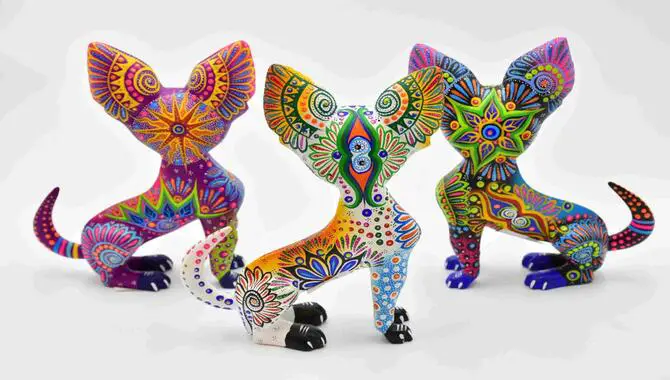
Alebrijes are a type of Mexican folk art that feature colorful figurines representing different aspects of life. These figures, which can be in the form of animals, humans, or gods, often use in religious ceremonies to symbolize important themes or characters from Mexican culture. Alebrijes make from various materials, including clay, wood, and wax.
They may paint or intricately carved and are often expensive due to their unique and colorful designs. Despite their high cost, alebrijes have value beyond their aesthetic appeal. They serve as reminders of Mexican culture and history and can use as unique gifts for special occasions.
3. Tree Of Life
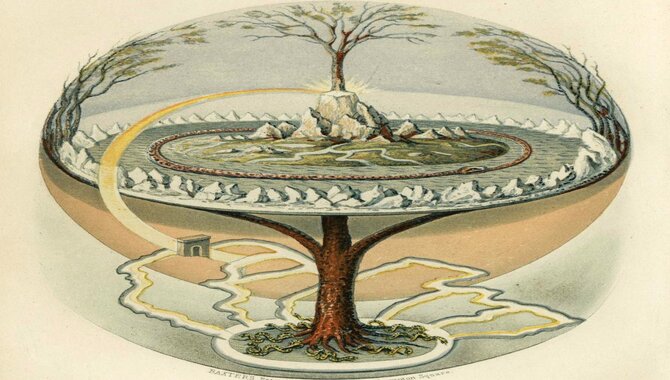
The Tree of Life is a complex sculpture made from wood, metal, and ceramic that dates back to the 16th century. The sculpture comprises nine interconnected circles representing the nine levels of existence. It is one of Mexico’s most popular tourist attractions and often uses in religious ceremonies. The Tree of life has played an important role in the culture of Mexico for centuries and continues to view as a symbol of the country’s rich history and culture.
4. Mazahua Textiles
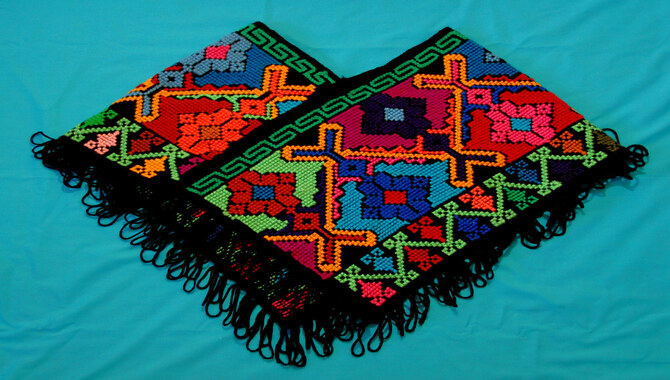
Mazahua textiles are a type of folk art that makes from cotton and woolen fabric. These textiles are usually colorful and feature intricate designs. They often use in traditional Mexican ceremonies, such as weddings and religious ceremonies. However, they are also popular as decorative items due to their unique beauty and artistic value.
Mazahua textiles reflect the traditions and culture of Mexico and can be quite special and unique. These artworks represent the country’s rich history, culture, and diverse people. From wedding dresses to sashes, Mazahua textiles cover many themes and styles. The art often makes by hand using traditional methods, which adds to its appeal and authenticity.
5. Silver Jewelry And Art
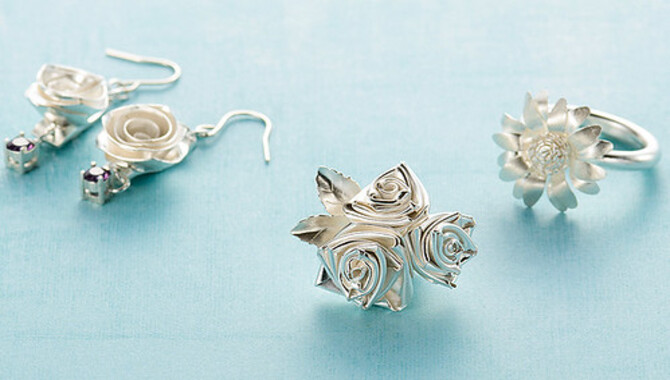
Silver art is a popular form of folk art in Mexico. It makes from silver, gold, or other precious metals and often features intricate designs and workmanship. Silver art has been used in Mexico for centuries to commemorate important events and to symbolize wealth and power. This art form remains popular today to show pride in one’s culture and heritage. Besides its aesthetic value, silver art can also be an investment, as it has value both as a collectible and as a means of storing value over time.
6. Yucatán Hammocks
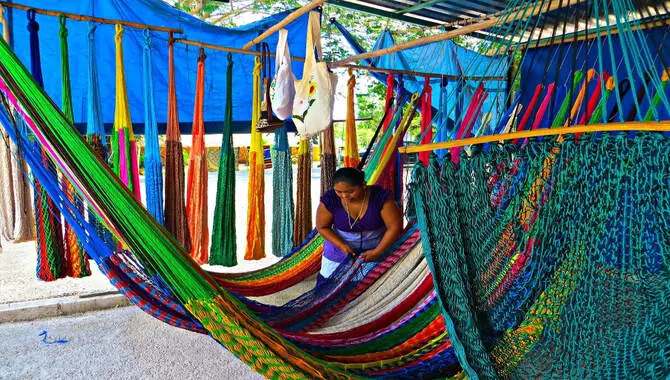
Yucatán Hammocks are made from woven cottonwood tree branches to create a hammock-like structure. The woven fabric is then painted with intricate patterns and colors to create an artistic and unique piece. These beautiful hammocks are sacred to the Mayans and use for meditation and relaxation.
People often use them as a place to store food during long fasting periods. You can find Yucatán Hammocks in various parts of Mexico, but they are most commonly found in the Yucatán Peninsula. These fascinating pieces of folk art represent the rich culture of Mexico and offer a glimpse into its heritage and history.
7. Talavera Pottery
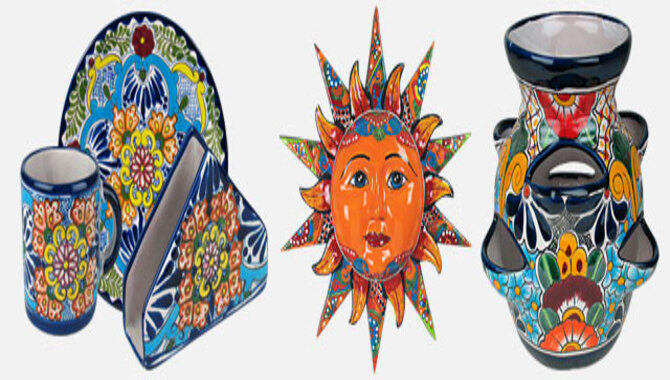
Talavera pottery is a type of folk art that originated in the Aztec Empire. It is made from various materials, including clay and copper, and is often decorated with colorful designs. People have long used Talavera pottery for religious ceremonies and decoration.
Today, it is still popular among collectors, artists, and households looking to add an authentic touch of culture to their homes. This art form characterizes by its unique style and use of indigenous materials, making it an interesting and diverse form of art. Whether you are a seasoned art collector or simply looking for an interesting way to decorate your home, Talavera pottery is a worthwhile investment.
8. Blown Glassware
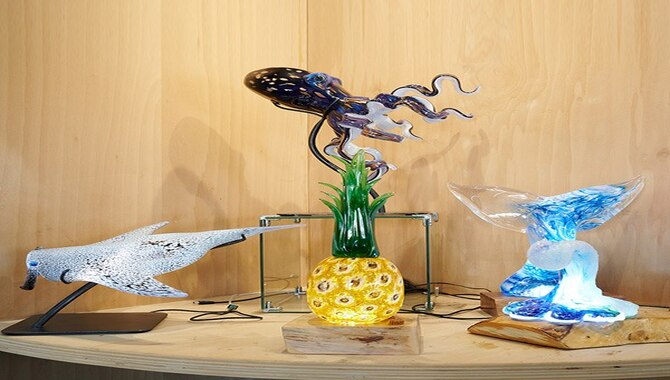
Blown glassware is one of the most common forms of Mexican folk art. It prizes for its unique and artistic designs. One popular type of blown glass artwork is pibecitos, or “little bubbles,” which are small glass spheres that have been blown into different shapes and sizes.
People often create Pibecitos as a tribute to a loved one or as a symbol of happiness. Blowing glass can be time-consuming and requires a lot of skill. Blown glassware often uses to decorate restaurants and homes and can find in many different styles. From tiny pibecitos to large pieces, Mexican folk art has much to offer artists and collectors worldwide.
9. Leather Goods
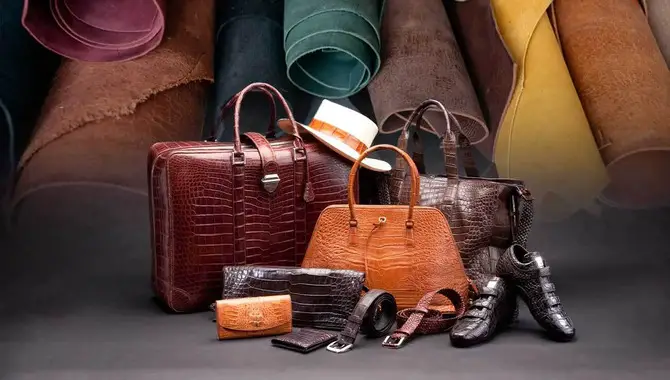
People in Mexico commonly make folk art in the form of leather goods. They typically make from animal skins, tanned, and then often treated with dyes or other materials to create unique and intricate pieces.
Leather goods can range from simple handbags to elaborate suitcases and purses. They often use for various purposes, such as clothing, furniture, ornaments, and religious icons. Leather goods are an integral part of Mexican culture and serve as a valuable art form and an everyday necessity.
10. Paper Craft
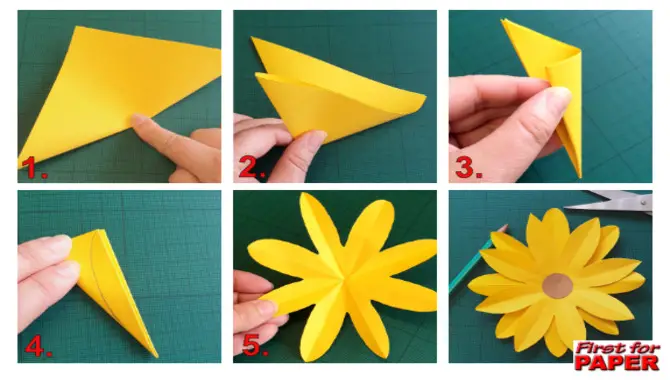
Mexican folk art is a vibrant and diverse art form with a long history of tradition and importance. Mexican folk art can be symbolic, from altars and sculptures to adornments and masks. Some of the most iconic pieces of Mexican folk art include traditional pottery, textiles, and jewelry. Whether you’re looking for inspiration or engaging in cultural enrichment, there are plenty of ways to explore Mexican folk art and its unique history and culture.
11. Oaxaca Textiles
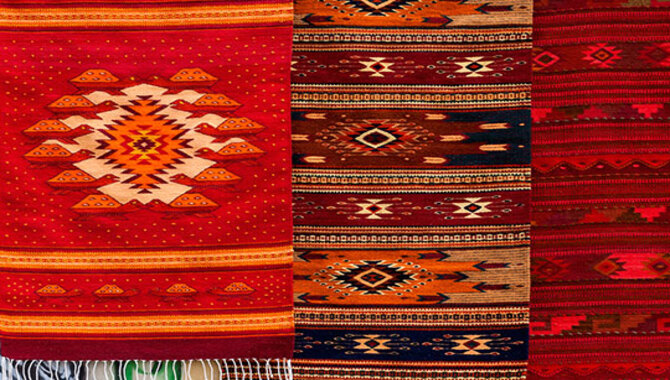
Oaxaca textiles are an important folk art from Mexico famous for their intricate designs, vibrant colors, and unique styles. Oaxaca’s textiles can make from various materials, including cotton, wool, silk, and leather.
These textiles are often colorful and intricate, making them unique and sought after for creating various objects, such as clothing and curtains. The tradition of Oaxaca textiles often links to the Zapotec culture and its ancient Maya heritage. These textiles have a rich cultural history and continue to play an important role in the local community today.
12. Sarapes De Saltillo
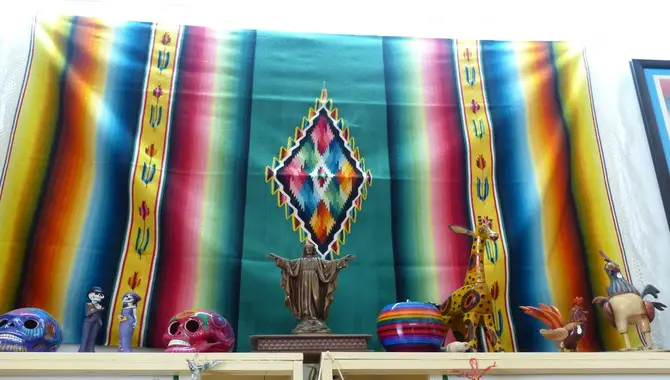
Sarapes de Saltillo is Mexican folk art made from saltillo reed mats. The mats are typically used to cover furniture or walls and are often colorful and intricately designed. These art pieces have been used in Mexican culture for centuries to represent different aspects of life, from celebrating the harvest to celebrating special occasions.
Sarapes de Saltillo is now a popular form of art to collect and exhibit, as they can use to create unique murals or as focal points in room designs. Besides being aesthetically pleasing, scrapes de Saltillo also have cultural and historical significance, making them an essential part of any art collection.
13. Cajitas De Olinalá
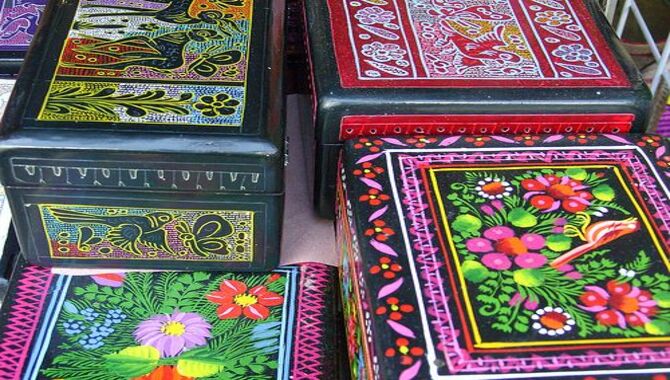
Cajitas de Olinala is an example of traditional Mexican folk art. The ceramic cups decorate with intricate designs made from various materials, including clay, wood, and silver. They often use for religious ceremonies or social gatherings.
The cups are also popular souvenirs and can find in many tourist destinations across Mexico. Cajitas de Olinala demonstrates the creative and expressive abilities of Mexican artists. These artworks showcase the diverse culture of Mexico and show how its people have continued to evolve.
What Are The Characteristics Of Mexican Folk Art?
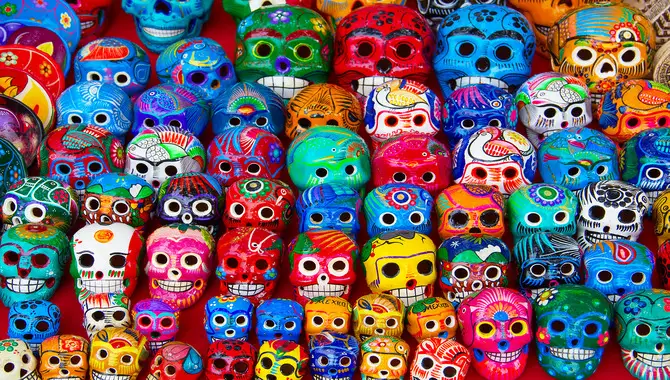
Mexican folk art is a form of art that originated in Mexico and has become an important part of the culture of the country. Folk art reflects the culture and heritage of Mexico. Mexican folk art is often colorful and intricate. It consists of various designs and motifs, usually made from paper, fabric, clay, wood, or metal.
Mexican folk art is an important part of Mexican culture. It can see in various forms, such as pottery, traditional costumes, crafts, paintings, and sculptures. It is meaningful to those who cherish their cultural heritage and identity. When you see Mexican folk art, don’t just look at its aesthetic value but consider its significance too.
What Are Some Examples Of Mexican Folk Art?
Mexican folk art is a wide variety of art forms, including painting, sculpture, and ceramics. You can find it in various mediums to reflect the country’s cultural heritage. Mexican folk art often features vibrant elements and symbols of Mexico’s culture.
This art form has a long history dating back to the Aztec civilization and is still popular today. In terms of significance, Mexican folk art provides us with a glimpse into the country’s diverse culture. It gives us an idea of how people in Mexico view art and their surroundings. Therefore, learning more about this art form is important to understand what makes Mexico unique.
Who Associates Skulls With Mexican Folk Art?
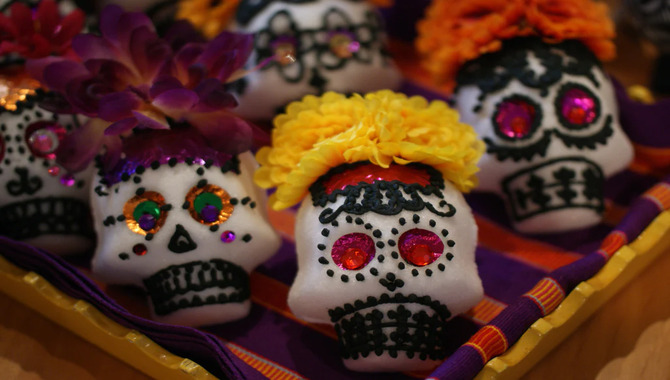
Mexican folk art skull motifs are popular globally because of their unique and appealing designs. Skulls often use to represent death, decay, and the afterlife in religious art, as a reminder of mortality or mortality’s inevitability. Some people also believe that wearing a skull on clothing or accessories wards off evil.
As such, skulls have been part of Mexican folk art for generations. Their use has evolved, with different regions featuring different styles. The use of skulls in folk art has also become more popular today. This is evident from the many artists who incorporate the skull into their artworks to evoke spooky and mystical feelings in viewers.
Which Mexican Folk Art Is Best For You?
There is a wide variety of Mexican folk art, depending on your interests and style. The art ranges from traditional crafts and designs to popular culture and art for the global market. You can try pottery, weaving, and woodwork, among traditional crafts.
Popular culture items include folk art masks, dolls, and toys. In terms of art for the global market, you can choose from paintings, sculptures, and photography. Many Mexican folk art pieces make using traditional techniques and materials. They feature vivid colors, folkloric motifs, and folk art expressions.
These pieces have a deep cultural history and have been passed down for generations through folk art practices such as painting or carving. Many people also collect them as souvenirs or gifts to add to their homes or office. You can enjoy Mexican folk art in various ways, such as painting, sculpture, or photography.
Conclusion
Mexican folk art is popular for its bright colors, vibrant patterns, and folk art motifs. These folk art designs and motifs reflect the culture of Mexico as well as the beliefs, traditions, and values of the people who created them over centuries.
Folk art designs like flowers, skulls, hearts, butterflies, animals, and suns characterize them. This art form reflects Mexican culture passed down from generation to generation. It has evolved to be unique and reflects the culture of Mexico. The designs vary from region to region and have evolved with time to become more intricate and complex.
Mexican folk art is popular for its vibrant colors and intricate designs. The artisans of Mexico have evolved methods of creating folk art unique to the culture and period. You can get in touch with folk art artists in Mexico who can help you design art using traditional materials such as clay, wood, and stone. These artists have created a body of work that has stood the test of time and continues to pass down through generations.
Frequently Asked Questions:
1.What Is The Significance Of Folk Art?
Ans: It can make with various materials, including metal, clay, textiles, and glass. Folk art can find in various locations, including museums, galleries, and private homes.
2.What Influenced Mexican Folk Art?
Ans: Various sources, including indigenous cultures, European art, and the various regions of Mexico, influence Mexican folk art. Artists often use brightly colored and intricate designs to reflect the culture and heritage of their region.
3.What Is The Mexican Folk Art Style?
Ans: Mexican folk art style is a popular type of painting and sculpture that originated in Mexico. The paintings and sculptures of Mexican folk art typically feature bright colors and intricate designs.
4.Is There Anything That Makes Mexican Folk Art More Valuable Than Other Forms Of Folk Art Around The World?
Ans: Some experts believe that one of the reasons Mexican folk art is more valuable than other forms of folk art around the world is because of its vibrant colors and intricate designs.
5.How Can Mexican Folk Art Be A Good Example Of Cultural Diversity Today?
Ans: Mexican folk art is a great example of cultural diversity because it draws from various sources, including indigenous and European art.

I’m a writer and blogger who loves to talk about entertainment, culture, and relationships. I love to share my thoughts and insights on these topics, and I’m always looking for new ways to engage with my readers. I’m also a big fan of learning new things, so I’m always exploring new areas of interest.
